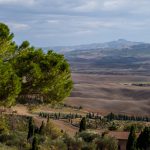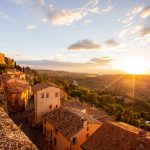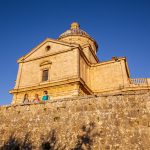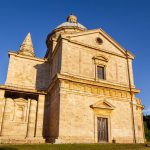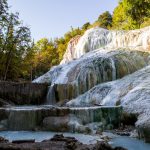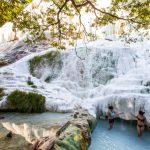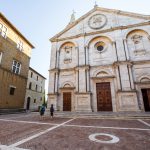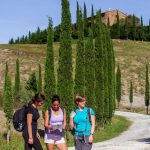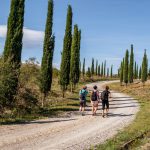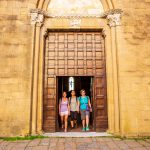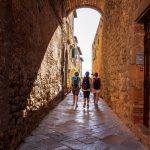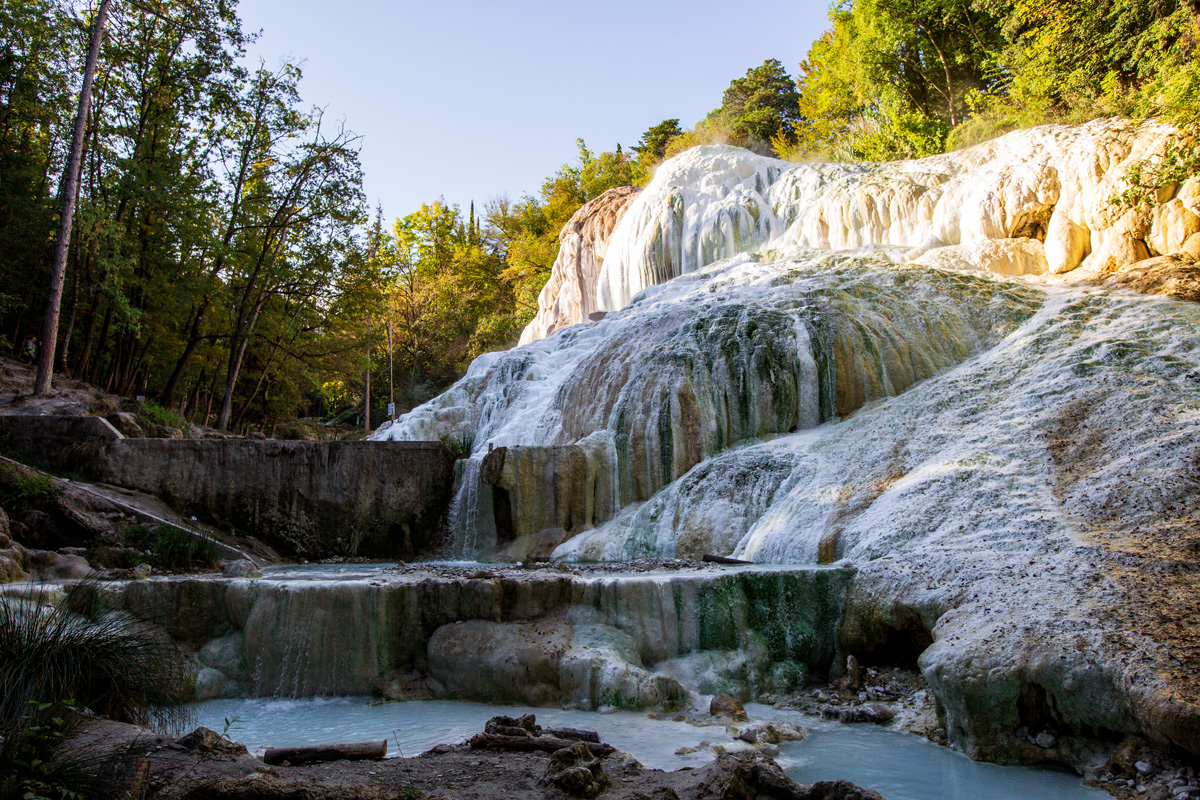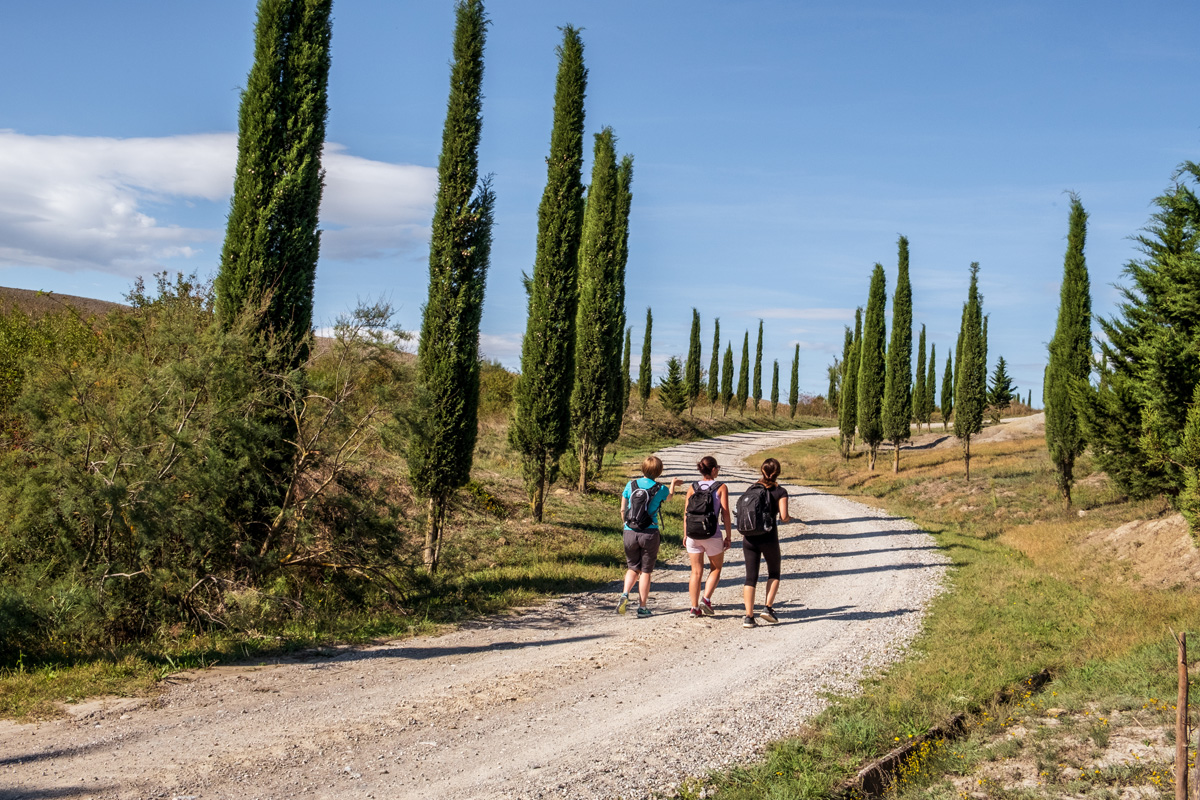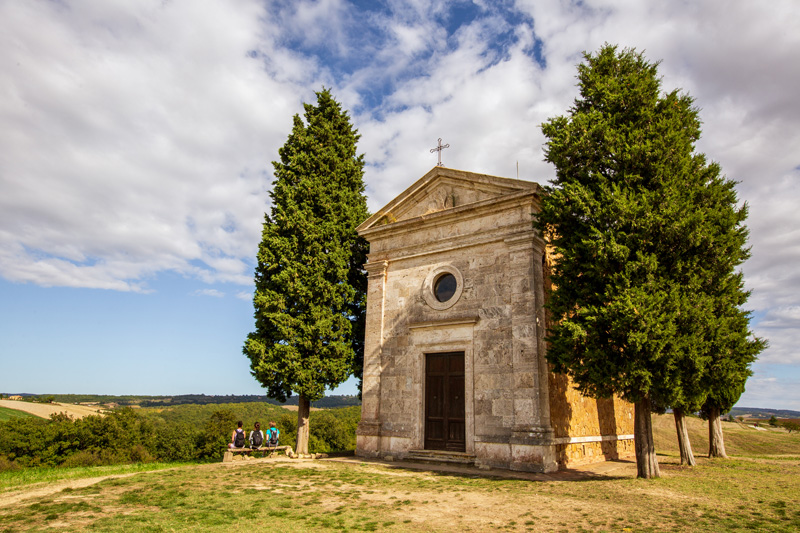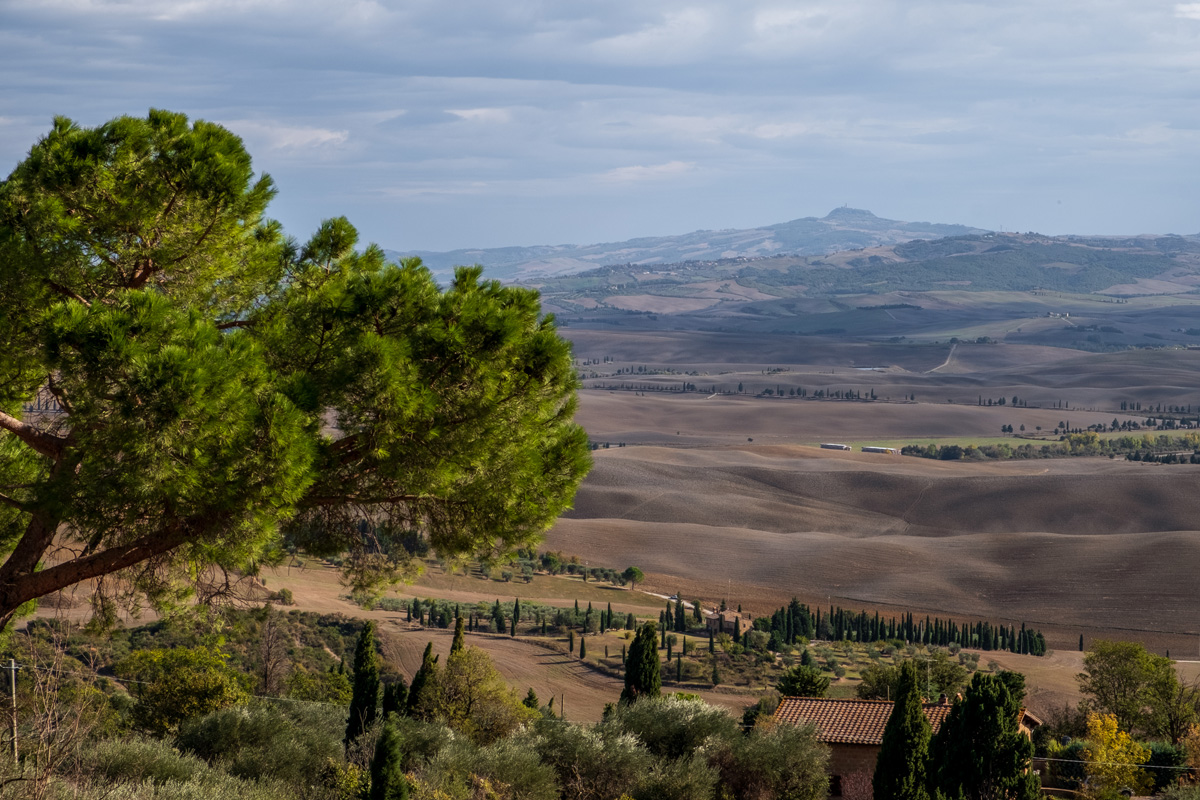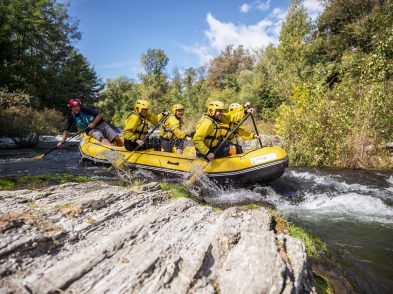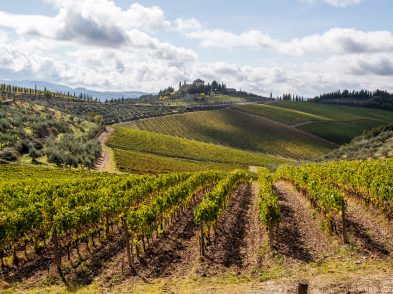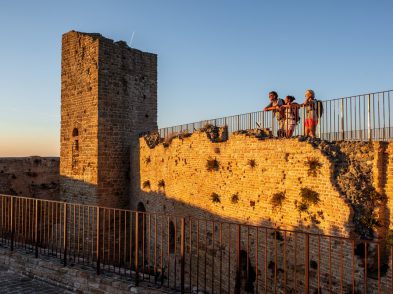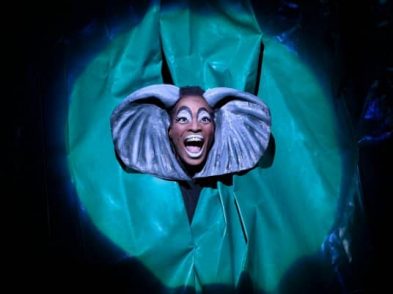The Val d’Orcia has earned a steadfast place in the collective imagination as the typical – if not ideal – Tuscan landscape, its gentle, rolling hills shifting in colour and surface with every change of season, its myriad of hamlets, churches, trails offering a resounding welcome to all visitors who dare to venture outside the major cities. The nearby Monte Amiata might be a different story all together. The mountainous landscape is covered in woods, crisscrossed with demanding hiking trails and dotted with medieval villages that work hard to preserve the history, traditions and authenticity of yesteryear. The Florentine spent some time exploring the best and most picturesque parts of this region of Tuscany, courtesy of Toscana Promozione Turistica and the Tuscany Adventure Times campaign.
- Montepulciano – Photos by Nicola Santini for Toscana Promozione Turistica
- Montepulciano – Photos by Nicola Santini for Toscana Promozione Turistica
- Bagni San Filippo – Photos by Nicola Santini for Toscana Promozione Turistica
- Bagni San Filippo – Photos by Nicola Santini for Toscana Promozione Turistica
- Bagni San Filippo – Photos by Nicola Santini for Toscana Promozione Turistica
- Bagni San Filippo – Photos by Nicola Santini for Toscana Promozione Turistica
- Pienza – Photos by Nicola Santini for Toscana Promozione Turistica
- Via Francigena – Photos by Nicola Santini for Toscana Promozione TuristicaPhotos by Nicola Santini for Toscana Promozione Turistica
- Via Francigena – Photos by Nicola Santini for Toscana Promozione TuristicaPhotos by Nicola Santini for Toscana Promozione Turistica
- Pienza – Photos by Nicola Santini for Toscana Promozione Turistica
- Pienza – Photos by Nicola Santini for Toscana Promozione Turistica
Up in the mountains
On the slopes of Monte Amiata, in the southern reaches of Tuscany, we start our day in Bagni San Filippo, famed for its hot springs, particularly the Fosso Bianco. This white mountain is sometimes known as the White Whale, given its snow-white surface, but surprisingly this isn’t snow we’re admiring: it’s calcium carbonate build-up, the minerals also lining the bottom of the natural pools, which are tinged a glacial blue colour thanks to the combination of the hot water pouring down from atop the Whale and the cold water of the river the formation sits on.
As we step into the water, clouds of sediment rise around our feet, as if stepping on a pile of flour that slowly settles back to the ground. Our guide, Valentina, tells me that the quality of the water is unique, rich in salts and minerals, making it a good reason to visit the area. Indeed, she explains, Lorenzo the Magnificent even came her to alleviate his skin issues, something visitors still come here for today. For a wilder, more authentic (and free!) experience, the Fosso Bianco is the place to visit, but for those seeking a bit of luxury, the nearby Terme San Filippo was opened to accommodate a full-range spa experience.n the slopes of Monte Amiata, in the southern reaches of Tuscany, we start our day in Bagni San Filippo, famed for its hot springs, particularly the Fosso Bianco. This white mountain is sometimes known as the White Whale, given its snow-white surface, but surprisingly this isn’t snow we’re admiring: it’s calcium carbonate build-up, the minerals also lining the bottom of the natural pools, which are tinged a glacial blue colour thanks to the combination of the hot water pouring down from atop the Whale and the cold water of the river the formation sits on.
Getting to the White Whale required a long hike from the nearest road, a common element in any visit to these parts. Remote trails crisscross the mountain, many of which can be taken directly from towns in the area, like Castel del Piano, Abbadia San Salvatore and Radicofani, all of which are suitable for hiking, mountain biking and even horseback riding. As Valentina reminds us, “On Monte Amiata, you can break down your hike into multiple days, following the various marked trails, and you can stop to sleep in one of the affordable refuges,” a true mountain experience, we all agree. She also informs us that “there are many trekking and walking routes around Monte Amiata that, as well as criss crossing the mountainside, pass through surrounding towns and villages, like Arcidosso and Santa Fiora. The trails, part of the R.E.T (Rete Escursionistica Toscana), bring most visitors into contact with a number of interesting monasteries, churches and wildlife.” Looking more closely at the map, the ring of trails does indeed branch out all over the area, bringing any willing hiker to the summit to admire astonishing panoramas that, on a clear day, stretch to the sea. For lower calibre walkers there are also plenty of shorter trails that allow for an equally enjoyable experience of the mountain.
Comparably extensive are the mountain bike trails of varying difficulty surrounding the mountain. Valentina recommends, however, that those exploring the area by mountain bike keep in mind the difficulty of the trails, which can drastically range in altitude from one point to another.
Down in the valley
Our next stop is the via Francigena, the medieval pilgrimage route that runs the length of Tuscany, from Passo della Cisa in the north to Acquapendente, just south of the Tuscan border. History tells us that the route was travelled by Sigeric, Archbishop of Canterbury, on his way to Rome, and his detailed account of the journey has shaped the road we travel today. The stretch of the Francigena we’re exploring is just outside San Quirico d’Orcia, in the heart of the Val d’Orcia and home to sites like the 9th-century Parish Church of San Quirico in Osenna and the famed Horti Leonini, a classic example of an Italian-style garden. The walk is arduous, but well worth it: the views of the surrounding landscape are unparalleled, as never before have I seen such vast emptiness, though not an emptiness that evokes melancholy; rather, a sense of peace that allows us to reflect on our lives without anything calling on our attention to distract us.t’s easy to know when you’ve made it to the Val d’Orcia, when the forests of the Amiata give way to a vast expanse of open land, hills as far as the eye can see and nothing in between. This time of the year, October, the land looks lunar, empty and desolate as this is when the soil is “resting,” says our guide. Come spring, the entire territory will explode with hues of green and yellow, when the wheat begins to grow.
We soon come to the Chapel of the Madonna di Vitaleta, dating to the 16th century, where we stop for a picnic lunch on the grass. The quaint chapel is by far one of the most photographed images in all of Tuscany, but getting here is no easy feat, located as it is a long way from the nearest road. Coming upon the chapel is best done on foot or by bike, enjoying this late-Renaissance gem as it appears on the horizon, surrounded on all sides by nothing but a few trees. You might find yourself losing track of time here, when all there is to do is bask in the silence of this place; and so we did, before packing our bags and heading off to Pienza, leaving the open fields behind us to instead look down at them from this Renaissance hilltop town.
Pienza’s history is entirely Renaissance in nature: rebuilt from the ground up by Pope Pius II in the mid-1400s under the direction of Bernardo Rossellino, it was designed to be an ideal Renaissance town. The humanist concepts of urban planning were first experimented with here, including clean geometrical shapes and new buildings constructed according to the architectural standards of the era. As we admire piazza Pio II, Valentina explains to us that Pienza can actually be the starting or ending point for walk (or bike ride) to Montepulciano, 15 km away in the Valdichiana, passing through the medieval village of Monticchiello, home to just a few hundred inhabitants.
Speaking of Montepulciano, that’s exactly where we’re headed next. With a quick stop at the Church of San Biagio, we’re off to the (fake) city of vampires, where we’ll spend the night before continuing our adventure elsewhere.
Check out Tuscany Adventure Times on Facebook and Instagram.

